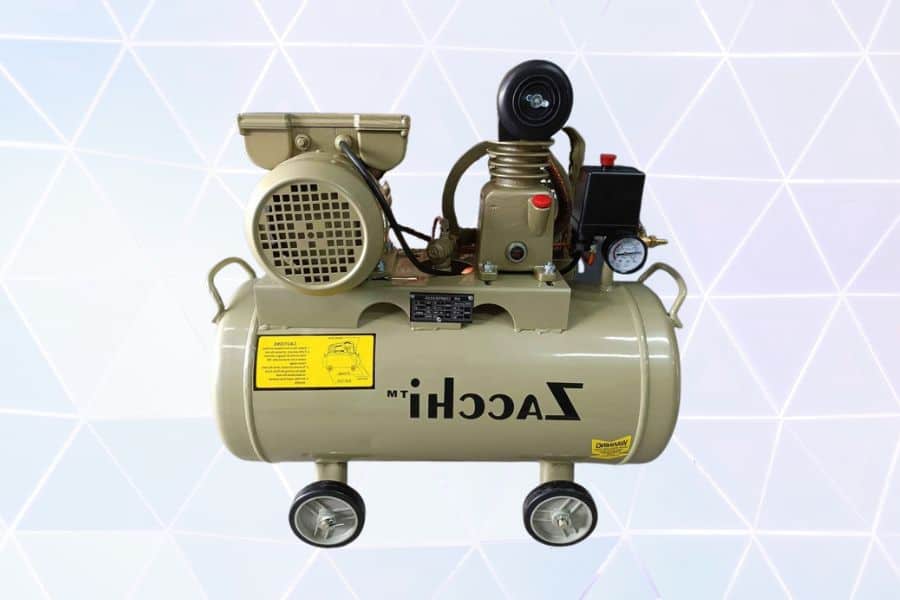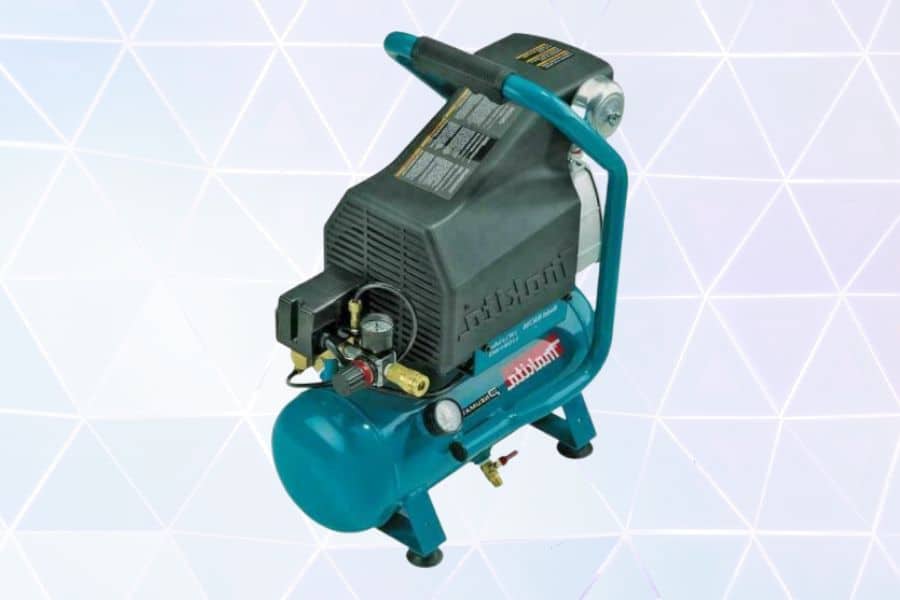Air compressors generally have some sort of drain valve. Therefore, it has some sort of maintenance for draining liquid. If you want to keep your compressor longer, you should know how to drain a compressor so you remove chemicals that could stick in your compressor for a long time.
Contents
How to Drain an Air Compressor
Whether you own a large or small compressor, the process of draining them is similar. You should know that the critical part of draining is to make sure most of the moisture is drained from the compressor tank. Here’s how to drain a compressor:
- The first thing you have to do is to make sure your compressor is turned off. You can do this by unplugging the outlet and ensuring the switch is turned off.
- Lower the pressure in the tank to at least under 10 PSI. you can lower the pressure by pulling the ring on the ASME safety to release some of the pressure. You can wear safety glasses to protect yourself from the released pressure.
- You can use your hand to deflect the air and shield the valve while your other hand pulls the ring with the other hand. Continue to pull until the tank is empty.
- Find the tank drain valve, which is usually located on the underside of the tank.
- Once you have located the draining valve, open it to drain off moisture from the tank.
- You can also tilt the tank to drain off any remaining moisture stuck inside the tank.
- Close the tank draining valve once the moisture has been drained off.

That’s how you usually drain a compressor. Some compressors which are specialized might have different methods for draining. Hence, it’s important to check the product manual first before draining your compressor.
How Does Drain Valve Work?
Most drain valves look the same, so they generally also work the same. Most drain valves work manually, so most of them pretty much follow the same mechanism. You can see a knurled ring generally located at the bottom.
You can turn this ring counter-clockwise or clockwise (depending on your air compressor model) to open the drain valve all the way. Turn it the opposite way you opened it to close it tight. It’s important you know how to open it so you can drain your compressor properly.
You need to open your draining valve all the way for it to drain properly. Otherwise, a half-opened valve could cause a blockage or inefficient draining. Make sure to inspect if the tank is drained completely.
Which Valve Is the Drain Valve?
If you still have trouble finding the draining valve, you can refer to your air compressor instruction manual. It usually contains a detailed diagram of the parts and where it’s located. As I said before, most of the time, the valve can be found on the bottom of the air tank.
It is found at the bottom of the largest part of the compressor. Drain valves can come in different shapes and forms. It depends on the model of your air compressor. However, it will have the same way of draining.

It is located at the bottom because of how it should work. If you want to drain the water out, it should go down according to gravity, so it drains easily.
How Often Should You Drain Your Air Compressor Tank?
The times you drain your compressor tank depend on how often you use it. When you use your compressor machine almost every day, you should drain it at least every 2 days of use. If you don’t, the dust might build up and reduce your compressor’s effectiveness.
A rule of thumb you can follow is draining the compressor tank after every three uses. If you haven’t used your compressor for a long time, you better drain the tank before you start using it.
Even if you don’t plan on using your compressor, make sure the compressor tank is cleaned and drained of any water or dust left inside that might be the reason for corrosion.
How Does Water Get in the Air Compressor?
The compressor works by sucking in air to compress. The air could also carry water vapor which creates moisture inside your tank. The moisture could turn into water droplets which can compile with time and build up water inside your tank.
Since the compressor sucks in air, it will also suck in other airbornes like dust and other pollutants. Combine that with water, and your compressor device will surely get some damage sooner than you might think.
Here are some things that could happen if you don’t drain out your compressor device:
- Water will build up and create rust inside your compressor. If left unchecked, the rust will weaken the durability of your compressor, making it unusable and not safe to use.
- While some compressors use gas, some use electricity, and it’s bad to get exposed to water. It might cause an accident and completely blow your compressor.
- Water can build up inside your tank, which will also take up space. This will reduce the amount of space the sucked air can get inside the tank. It will reduce the effectiveness of your compressor.
- Water isn’t your only problem, as other pollutants could build up and become an obstruction to the airflow of your compressor. This will reduce your tool’s efficiency or can even lead to permanent damage.

Safety Tips for Draining Your Air Compressor
You are dealing with tools, and some even use electricity, so you should always prioritize safety practices. Here are some tips that you can follow to make draining your compressor safer.
- Make sure your compressor is unplugged or have its power source removed before you start the draining process.
- Wear safety goggles and gloves to protect from unexpected potential hazards like flying dust going into your eyes or hot surface.
- You can tilt the compressor to make sure that all the water is drained out.
- Make sure you tighten the draining valve properly after draining, or it will affect its effectiveness when in use. You can use threading tape as an additional reinforcement.
- You can check for leaks in your draining valve by soaking it with soapy water, and the air inside will be notified when it is leaking because it will create bubbles in the specific leak.
How Automatic Drain Valve Works
If you’re the lazy type, you can choose to get an automatic draining valve. It saves you a lot of time as you don’t have to spend time draining the compressor device by yourself. Most people prefer using automatic, especially if they want to use a heavy-duty compressor.
You can even replace your manual draining valve with an electric one. All you have to do is set the frequency compatible to effectively drain your compressor device. For example, if you use your air compressor daily, you can set the frequency to drain once a day.
However, you need to connect the automatic drain valve with a power source, so if you don’t have electricity, it won’t start the draining process. You also need a container to catch the drained water, and all you have to do is dispose of it before it overflows.
Conclusion
Draining your air compressor counts as part of the maintenance. If you don’t drain your compressor device, it might house water and dust that can damage and reduce the effectiveness of your machine. That’s why it’s important to know how to drain an air compressor.

